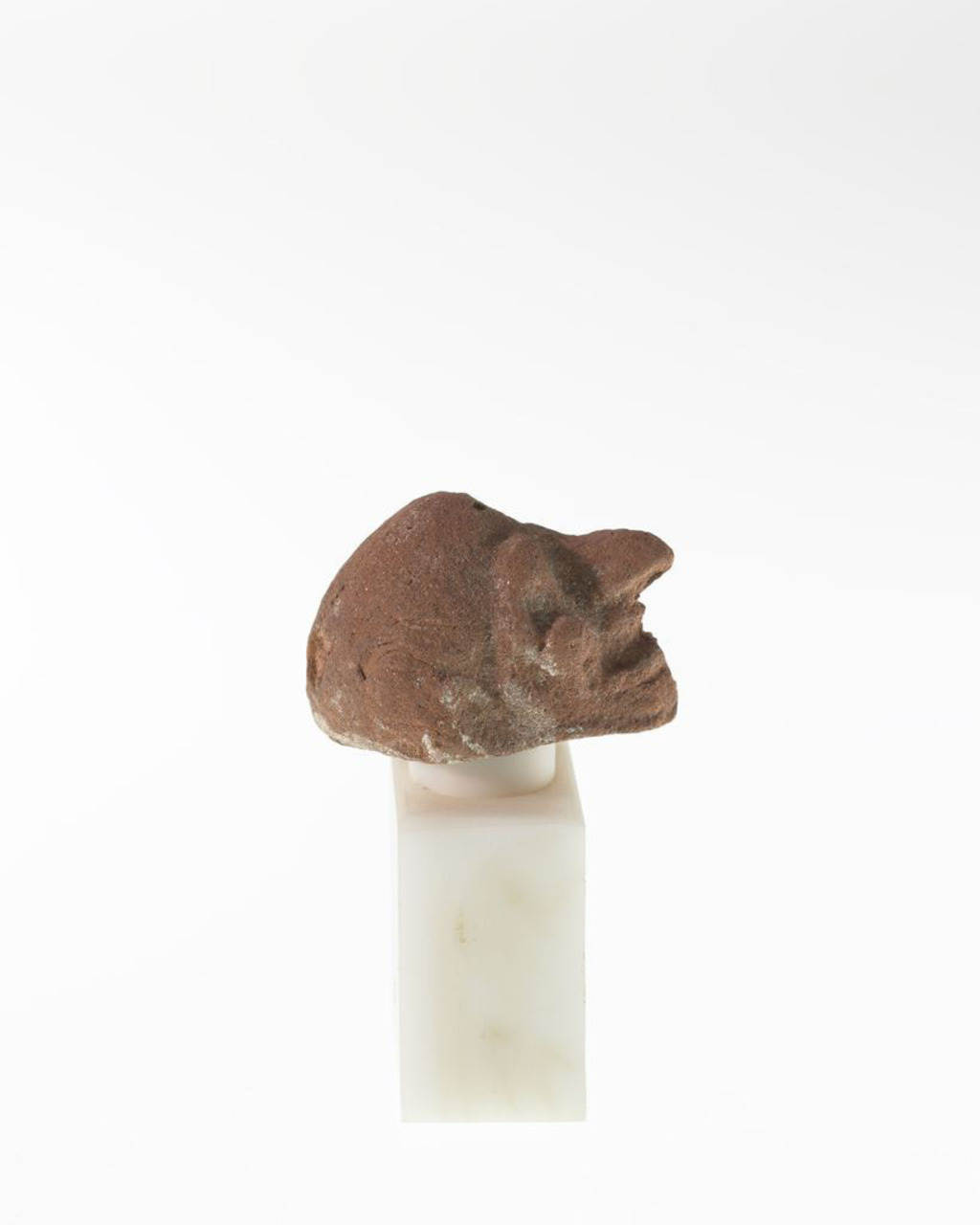Made in molds as an early type of mass production, objects such as this head were quite popular during the Hellenistic and Roman periods (323 BCE–476 CE) and are known from important production centers in Egypt. This small terracotta head, now broken at the chin, was once part of a statuette. These types of figurines typically had the head and body molded separately, which contributes to the fact that the majority of this class of objects consists of heads without their bodies as the neck is a naturally weaker point joining the two separately molded pieces. The features of the face are exaggerated as seen in the thick brow ridge, the large, beak-like nose, and the plump, oversized lips. The figure may represent a mime, actor, or some other type of entertainer in the style of a comic mask, which were used in theatrical productions.
In the past, such highly stylized figures were sometimes called “grotesques,” which is now recognized as a problematic term. This word was used to refer to figurines with exaggerated features and/or physical deformities. It was thought that such figures were meant to inspire pity or cause the viewer discomfort. Today, it is thought that terracotta figures such as this one functioned as apotropaic amulets designed to ward off evil or as fertility charms.







